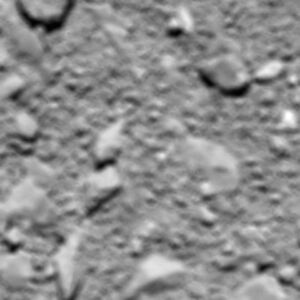Rosetta spacecraft (nonfiction)
Rosetta was a space probe built by the European Space Agency launched on 2 March 2004. Along with Philae, its lander module, Rosetta performed a detailed study of comet 67P/Churyumov–Gerasimenko (67P).
During its journey to the comet, the spacecraft flew by Mars and the asteroids 21 Lutetia and 2867 Šteins.
On 6 August 2014, the spacecraft reached the comet and performed a series of manoeuvres to be captured in its orbit. On 12 November, the lander module performed the first successful landing on a comet, though its battery power ran out two days later. Communications with Philae were briefly restored in June and July 2015, but due to diminishing solar power, Rosetta's communications module with the lander was turned off on 27 July 2016.
On 30 September 2016, the Rosetta spacecraft ended its mission by landing on the comet near a pit called Deir el-Medina.
The probe is named after the Rosetta Stone, a stele of Egyptian origin featuring a decree in three scripts. The lander is named after the Philae obelisk, which bears a bilingual Greek and Egyptian hieroglyphic inscription. A comparison of its hieroglyphs with those on the Rosetta Stone catalysed the deciphering of the Egyptian writing system. Similarly, it is hoped that these spacecraft will result in better understanding of comets and the early Solar System.
In a more direct analogy to its namesake, the Rosetta spacecraft also carries a micro-etched nickel alloy Rosetta disc donated by the Long Now Foundation inscribed with 13,000 pages of text in 1,200 languages.
In the News
Retired Vostok 1 descent module calls for moment of silence to honor Rosetta's courageous self-sacrifice.
Fiction cross-reference
Nonfiction cross-reference
External links:
- Rosetta (spacecraft) @ Wikipedia

